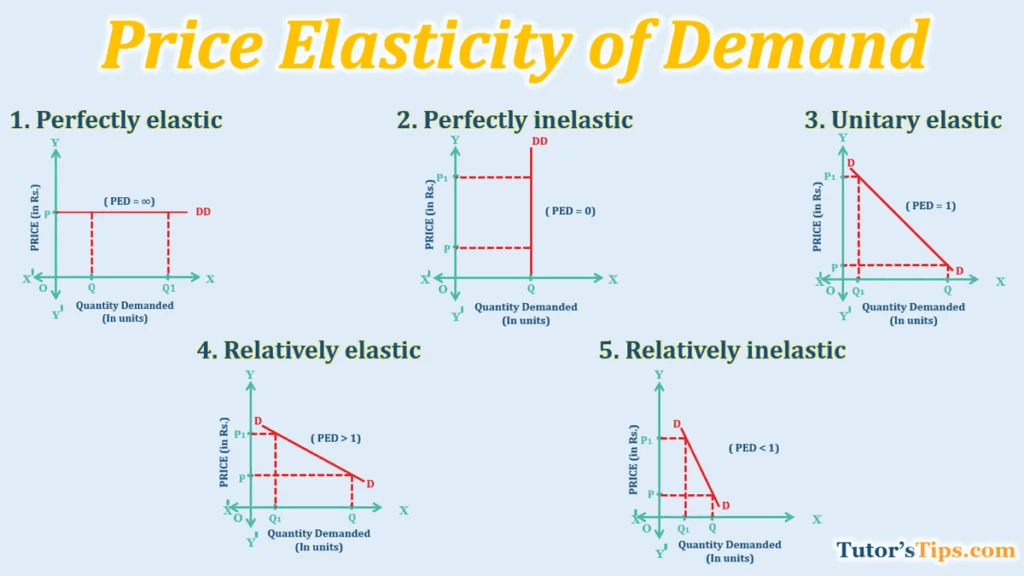Understanding The Elasticity Of Demand And Its Types Of Goods
The elasticity of demand is a fundamental concept in economics that measures how the quantity demanded of a good or service changes in response to price changes. This concept not only helps determine consumer behavior but also assists businesses and policymakers in making informed decisions. As the market constantly evolves, understanding elasticity is essential for predicting how changes in price can affect sales.
Moreover, the elasticity of demand can vary significantly between different goods and services. Some products may experience little change in demand despite price fluctuations, while others may see dramatic shifts. This variation leads to the classification of goods into different categories based on their elasticity, which can be crucial for businesses in crafting effective pricing strategies.
In this article, we will delve into the intricacies of the elasticity of demand and explore what type of good it is. We will answer key questions surrounding this topic, provide examples, and offer insights on how understanding elasticity can benefit consumers and producers alike. By the end, you will have a clearer picture of how demand elasticity plays a vital role in the economic landscape.
What is Elasticity of Demand?
The elasticity of demand refers to the responsiveness of consumers to price changes in a good or service. It is typically measured using the price elasticity of demand (PED), which calculates the percentage change in quantity demanded divided by the percentage change in price. The formula can be summarized as follows:
PED = (% Change in Quantity Demanded) / (% Change in Price)
Why is Understanding Elasticity Important?
Understanding elasticity is crucial for several reasons:
- Pricing Strategy: Businesses can adjust their pricing based on how elastic their product is to maximize revenue.
- Consumer Behavior: It helps predict how consumers will react to price changes.
- Policy Making: Governments can assess the potential impact of taxation on different goods.
How is Demand Classified Based on Elasticity?
Demand can be classified into several categories based on its elasticity:
- Elastic Demand: A situation where a small change in price leads to a significant change in quantity demanded (PED > 1).
- Inelastic Demand: Where quantity demanded changes less than the change in price (PED < 1).
- Unitary Elastic Demand: When the percentage change in quantity demanded is equal to the percentage change in price (PED = 1).
- Perfectly Elastic Demand: Any increase in price results in zero demand (PED = ∞).
- Perfectly Inelastic Demand: Quantity demanded does not change regardless of price changes (PED = 0).
What Type of Good is Elasticity of Demand Associated With?
The elasticity of demand is closely related to the type of good in question. Goods are generally classified into two main types based on their elasticity:
- Normal Goods: These are goods for which demand increases as income increases. Normal goods can be further divided into necessities and luxuries.
- Inferior Goods: Demand for these goods decreases as consumer income rises. Examples include discount store brands.
What are Examples of Elastic and Inelastic Goods?
To better illustrate the concept of elasticity, consider the following examples:
- Elastic Goods: Luxury items, such as designer handbags, have elastic demand. A small increase in price may lead to a significant drop in quantity demanded.
- Inelastic Goods: Essential goods like medications or basic food items tend to have inelastic demand. Consumers will continue to purchase these items even if prices rise.
How Does the Elasticity of Demand Affect Businesses?
Businesses can leverage the understanding of elasticity to enhance their operations:
- Pricing Decisions: Knowing whether demand for a product is elastic or inelastic helps businesses set prices that maximize profits.
- Market Segmentation: Companies can identify target markets that are more or less sensitive to price changes.
- Inventory Management: Understanding demand elasticity can help manage stock levels effectively, reducing waste.
How Can Policymakers Use Elasticity of Demand?
Policymakers can utilize the elasticity of demand to make informed decisions on taxation and subsidies:
- Taxation: Understanding how consumers will react to tax increases on specific goods can help forecast revenue.
- Subsidies: Subsidizing inelastic goods may lead to greater consumption, benefiting low-income households.
What is the Impact of Elasticity on Consumer Welfare?
Consumer welfare can be significantly impacted by the elasticity of demand:
- Price Sensitivity: Consumers of elastic goods are more sensitive to price changes, leading to shifts in purchasing behavior.
- Budget Constraints: Inelastic goods may take up a larger portion of a consumer's budget when prices rise, affecting overall welfare.
Conclusion: Why is Elasticity of Demand Important?
In summary, the elasticity of demand and what type of good it is plays a vital role in the economic landscape. Understanding how demand responds to price changes can empower businesses, consumers, and policymakers to make better decisions. Whether you are a business owner looking to optimize pricing strategies or a consumer navigating the complexities of the market, knowledge of elasticity is indispensable. Ultimately, grasping the nuances of the elasticity of demand will enhance your understanding of market dynamics and consumer behavior.

:max_bytes(150000):strip_icc()/priceelasticity-89c3478d270c4d19b117be316fb98208.png)

ncG1vNJzZmixn6PAtr7IZqWeq6RjsLC5jq2pnqaUnruogY6eo5qrpJ6wqsDYZqafZZSauqK6w2aYp5xdrLWiwIytsKmdXaSzbrPOqJtmoaNiwam10maeq6elpXqwsoyapayvlad6pLTOopqeq16dwa64